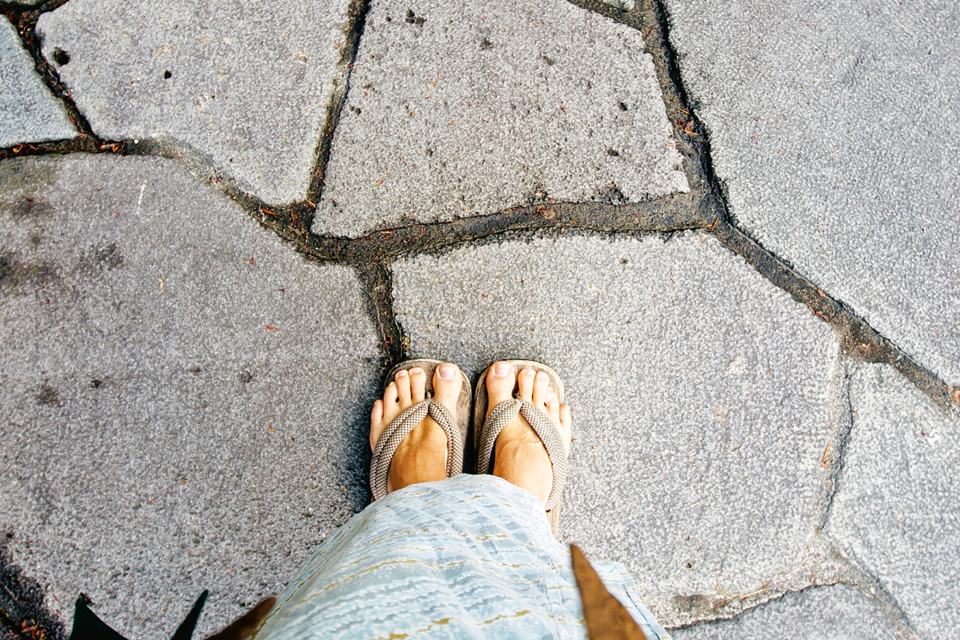Notoriously elusive, the Japanese philosophy of wabi-sabi underpins much of Japanese culture. And while it’s impossible to distil its essence into a simple description, there are many facets of wabi-sabi that can lead us to live more joyous, fulfilling lives.
Almost 1000 years ago, to understand imperfection was believed to be the path to enlightenment and is a fundamental principle of Zen Buddhism. The premise of Zen is to eschew perfection and permanence, and to acknowledge nature’s cycle of impermanence. Often referred to as “the Zen of things”, the Japanese concept of wabi-sabi has the same philosophical underpinning.
In short, wabi-sabi can be described as the beauty of imperfections and, as many authors and academics have found, the practice is intricately layered and complex. But, when we delve deep enough, it offers many tangible
practices that can imbue our lives with deeper meaning.
A history of wabi-sabi
Many have attempted to classify wabi-sabi with words such as passing, fragile, imperfect, broken, rustic and melancholic. But describing the philosophy is a task not easily accomplished. While the meaning of both words has evolved over the past few hundred years, the most commonly accepted definition of “wabi” is a bittersweet job or one’s life and spiritual path. Meanwhile, “sabi” denotes an aesthetic ideal of outward objects featuring wear and ageing.
Wabi-sabi is said to have originated in Kyoto, Japan, on a beautiful autumnal day. Legend has it that a tea master named Sen no Rikyū asked his disciple to prepare for a tea ceremony. The disciple followed his master’s orders and set out to tend to the garden by raking the leaves, clipping the hedges and clearing the pathway from rocks and stone. The garden, he thought, was immaculate and ready for the tea ceremony. Upon completion, the master carefully inspected the garden. He then walked to a nearby maple tree and shook its branches until several crimson leaves cascaded down, landing delicately on the courtyard. This one poignant movement demonstrated the beauty of wabi-sabi. Today, master Rikyū is heralded as an original practitioner of wabi-sabi and the father of the modern tea ceremony. Philosophically, wabi-sabi was an antithetical shift from the ruling classes that, at the time, favoured excess and indulgence. Rikyū has introduced an aesthetic that honoured the natural, the beautiful and the simple. An accomplished tea practitioner was revered to harmonise these elements into a unified tea-drinking experience.
In the several hundred years that have followed, wabi-sabi became a social practice that extends from interior and garden design to architecture, painting, cooking, performative arts and even flower arranging. It’s said to have entered Western consciousness in the late sixties, attracting creatives, musicians and soul seekers who were looking to philosophy and spirituality in the quest to understand the greater meaning of life.
Philosophically, wabi-sabi proudly stands as the antithesis of symmetry. In a world that values perfection in all areas of our lives — from our finances to our careers, our diets and our bodies — the practice provides a much-needed respite. In his book Wabi-sabi for Artists, Designers, Poets & Philosophers, Leonard Koren writes: “Wabi-sabi is the beauty of things imperfect, impermanent and incomplete. The antithesis of our classical Western notion of beauty as something perfect, enduring and monumental.” For Leonard, wabi-sabi resolved his “artistic dilemma about how to create beautiful things without getting caught up in the dispiriting materials that usually surround such creative acts.” When we view the world with this lens, suddenly, everything has its unique beauty: a crack on a vase, a smear of paint on a canvas and a natural tear in a piece of pottery. Something we once considered to be an imperfection can be viewed to have character and beauty.
7 Zen principles for achieving wabi-sabi
- Kanso: simplicity
- Fukinsei: asymmetry or irregularity
- Shibumi: beauty in the understated
- Shizen: naturalness without pretension
- Yugen: subtle grace
- Datsuzoku: freeness
- Seijaku: tranquillity
The search for deeper meaning
If you ask a Japanese person to describe wabi-sabi, you’ll likely be met with a long pause, a hand on the heart, a gesture and a hesitation. For the Japanese, wabi-sabi is not a concept, but a way of being. In her book Wabi Sabi: Japanese Wisdom for a PerfectlyImperfect Life, Beth Kempton writes: “Wabi-sabi is fundamental to the aesthetic sense and gentle nature of Japanese people. It is a world view that guides the way they experience life, although it is rarely discussed. Its influence is everywhere, and yet nowhere to be seen. People instinctively know what the concept of wabi-sabi represents, but few can articulate it.” Much like Zen, wabi-sabi is sublimely subtle and intricately layered. And while it can’t be perfectly articulated, it can be sensed. “Wabi-sabi is a state of the heart,” writes Beth. “It is felt in a moment of real appreciation — a perfect moment in an imperfect world. We can nurture it with our willingness to notice details and cultivate delight. And we experience it when we are living the most authentic, most inspired versions of our lives.”
To understand wabi-sabi is to go beyond the rational, conscious mind and into a deeper, more experiential level. It invites us to pause. It’s a deep breath in and a long exhale. It’s welcoming a slower pace. It’s acceptance and mindfulness. “The principles that underlie wabi-sabi can teach us life lessons about letting go of perfection and accepting ourselves just as we are,” writes Beth. “They give us tools for escaping the chaos and material pressures of modern life, so we can be content with less. And they remind us to look for beauty in the everyday, allowing ourselves to be moved by it and, in doing so, feel gratitude for life itself.” To accept each moment as it arises, without expectation, is to practise wabi-sabi. And to appreciate things for how things are, rather than how they should be, is to practise wabisabi.
The true beauty of wabi-sabi is embodied in the very essence and ephemeral nature of life. It can be viewed in a single flower which, when in bloom, brings boundless beauty, but will ultimately wilt and wither — demonstrating the delicate balance of joy and melancholy, of prevalence and impermanence. As poet and author Leonard Cohen famously sang in 1992: “There is a crack in everything. That’s how the light gets in.” He was, of course, pointing to the intrinsic nature of imperfections in life and all around us. Indeed, the teachings of wabi-sabi are omnipresent in nature and in life; we just need to open our minds and hearts to experience them.
Words DANAE DIMITROPOULOU
Want to learn about being inspired? Visit our inspired archive.




